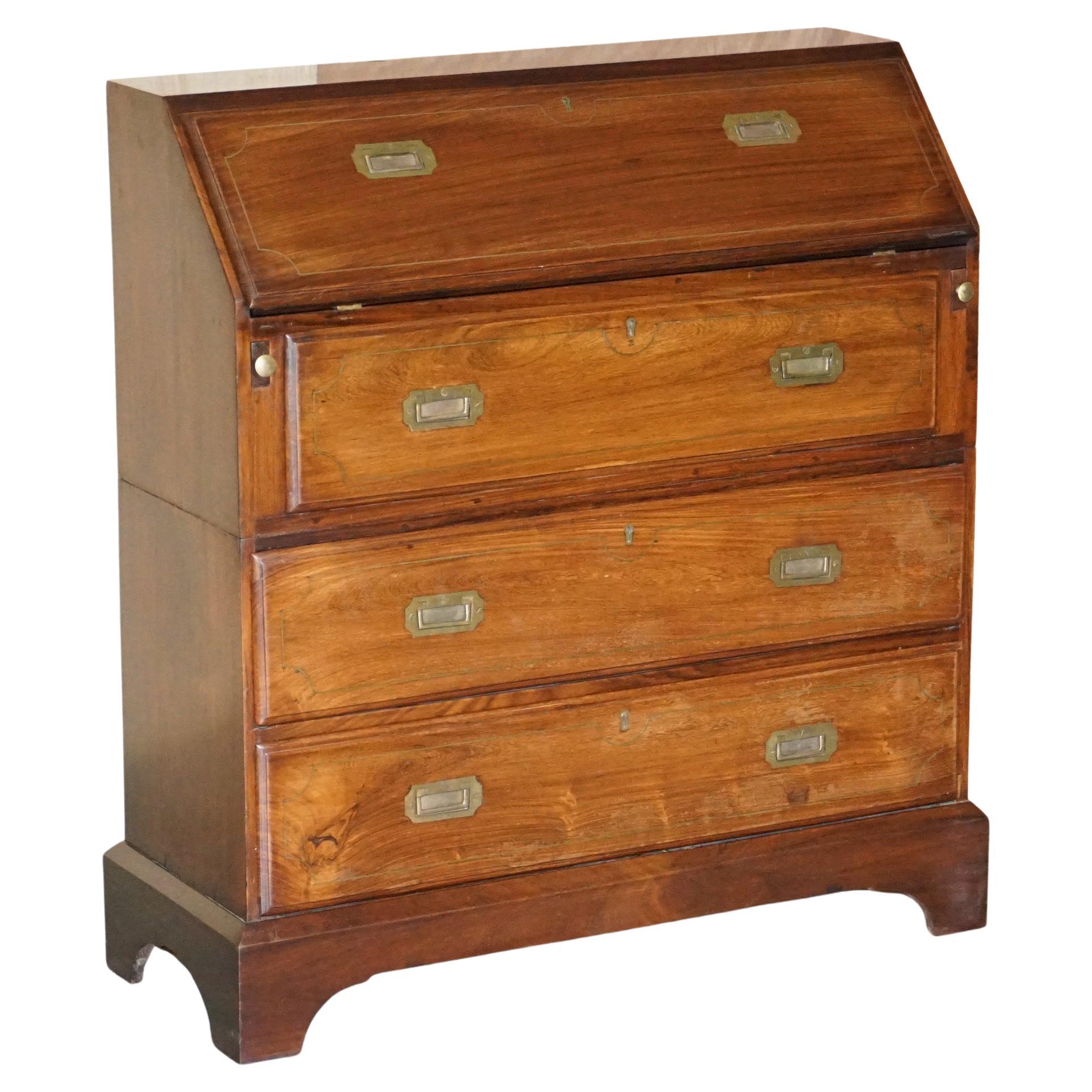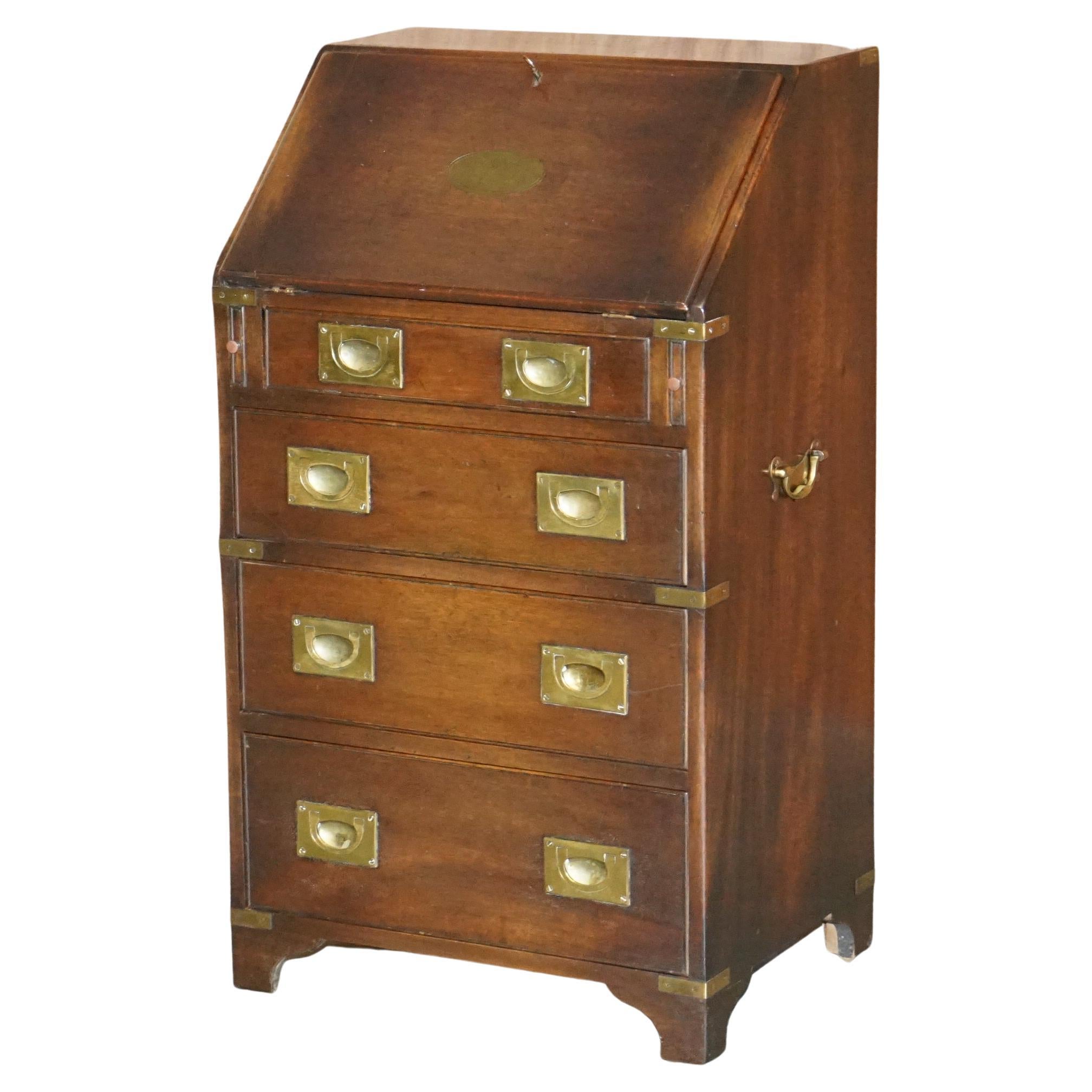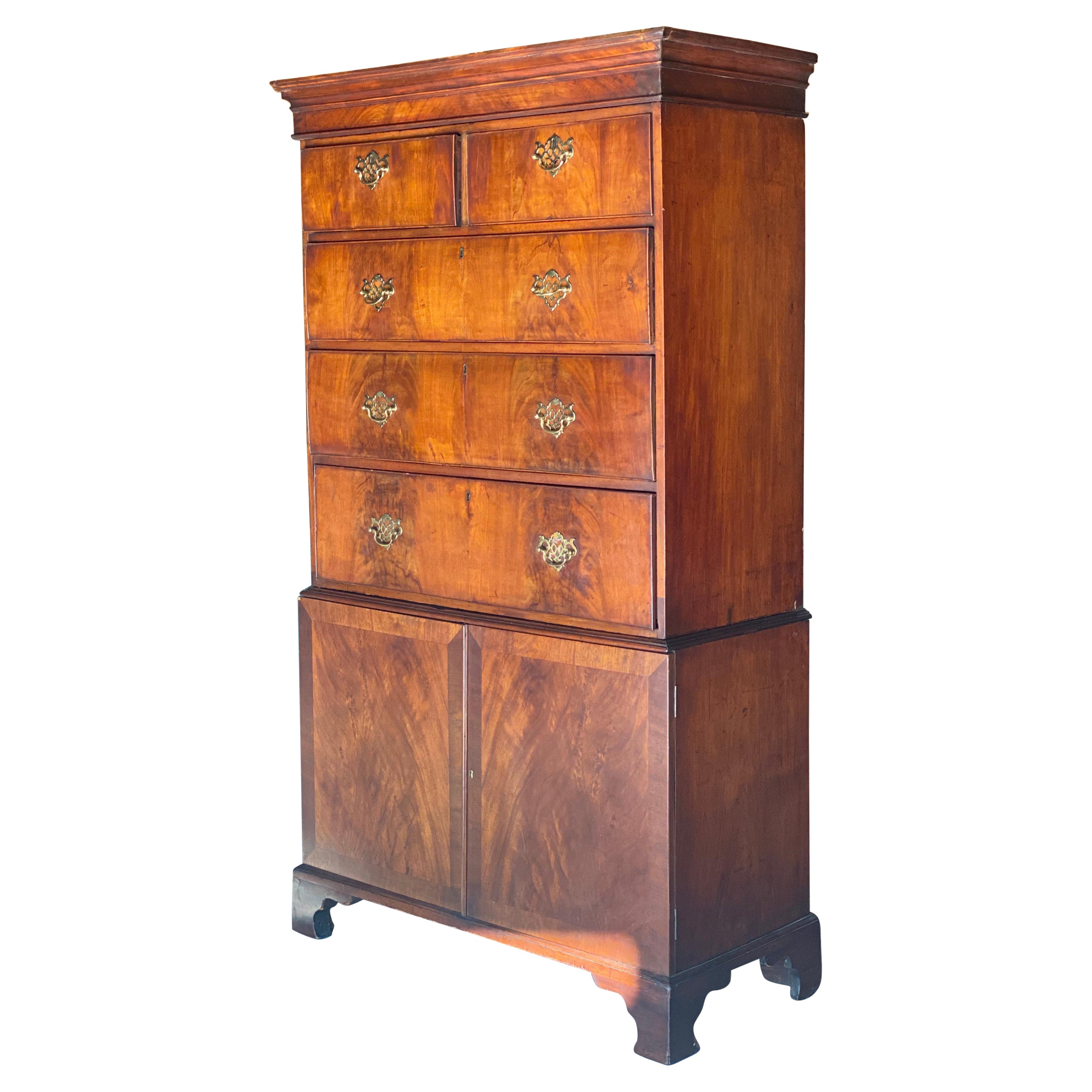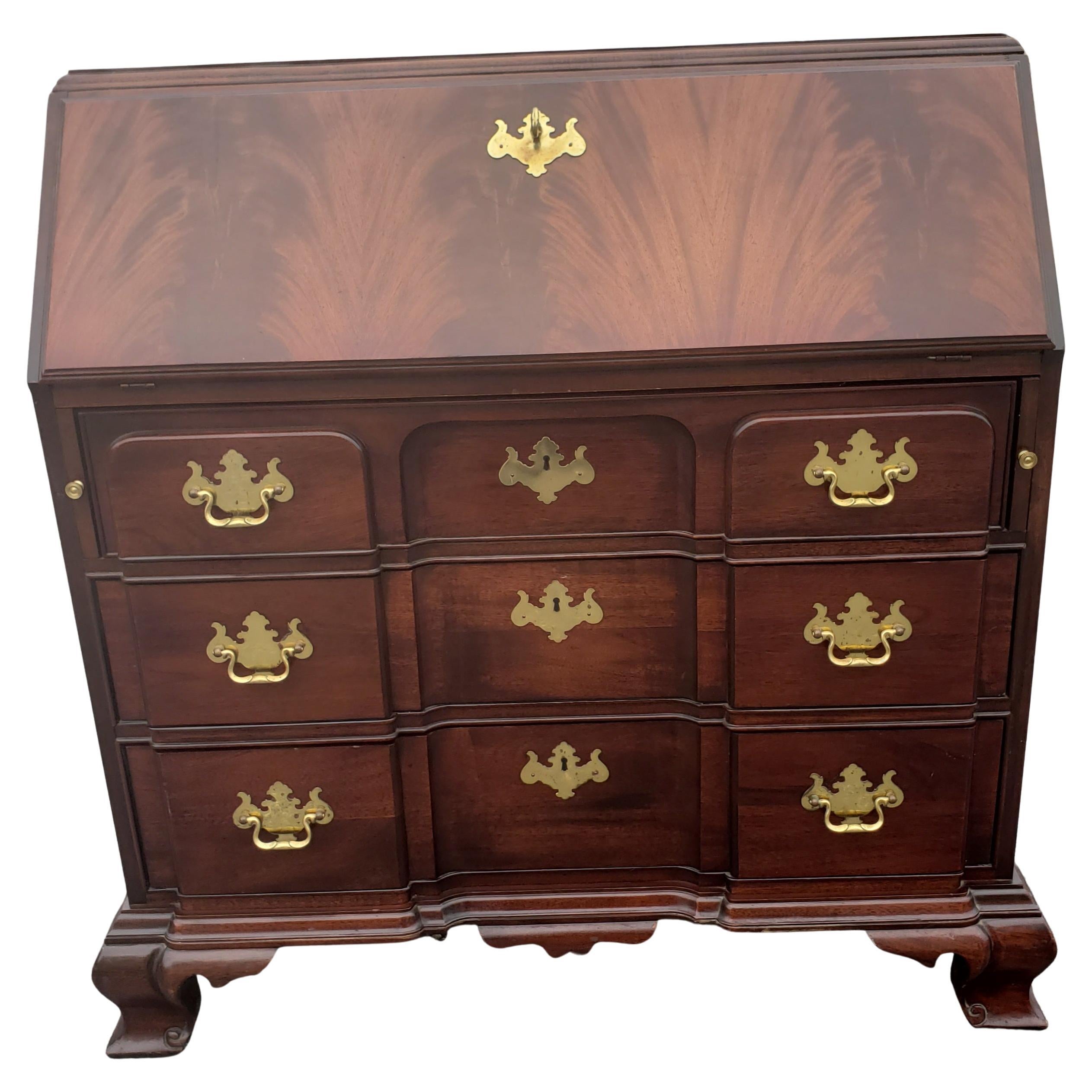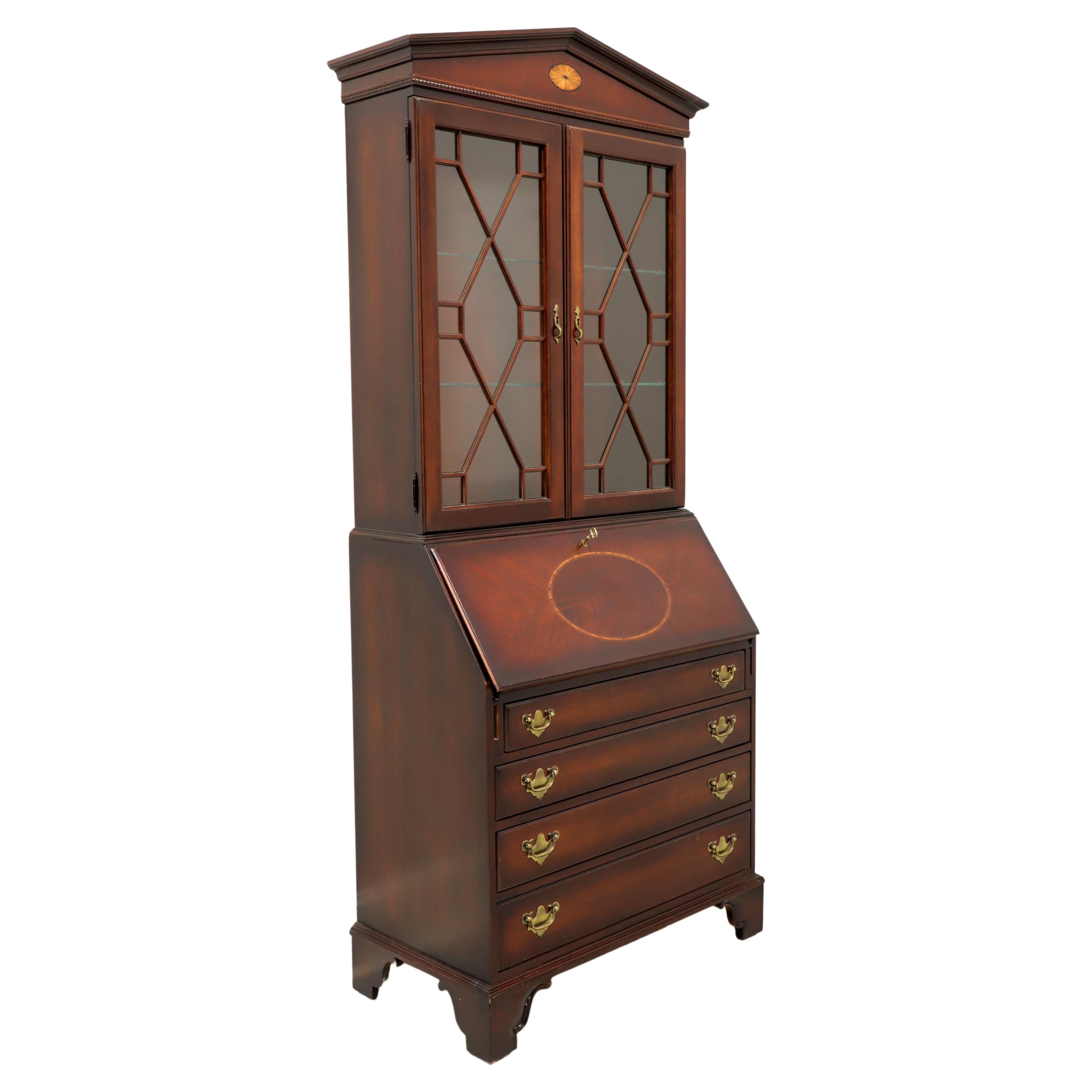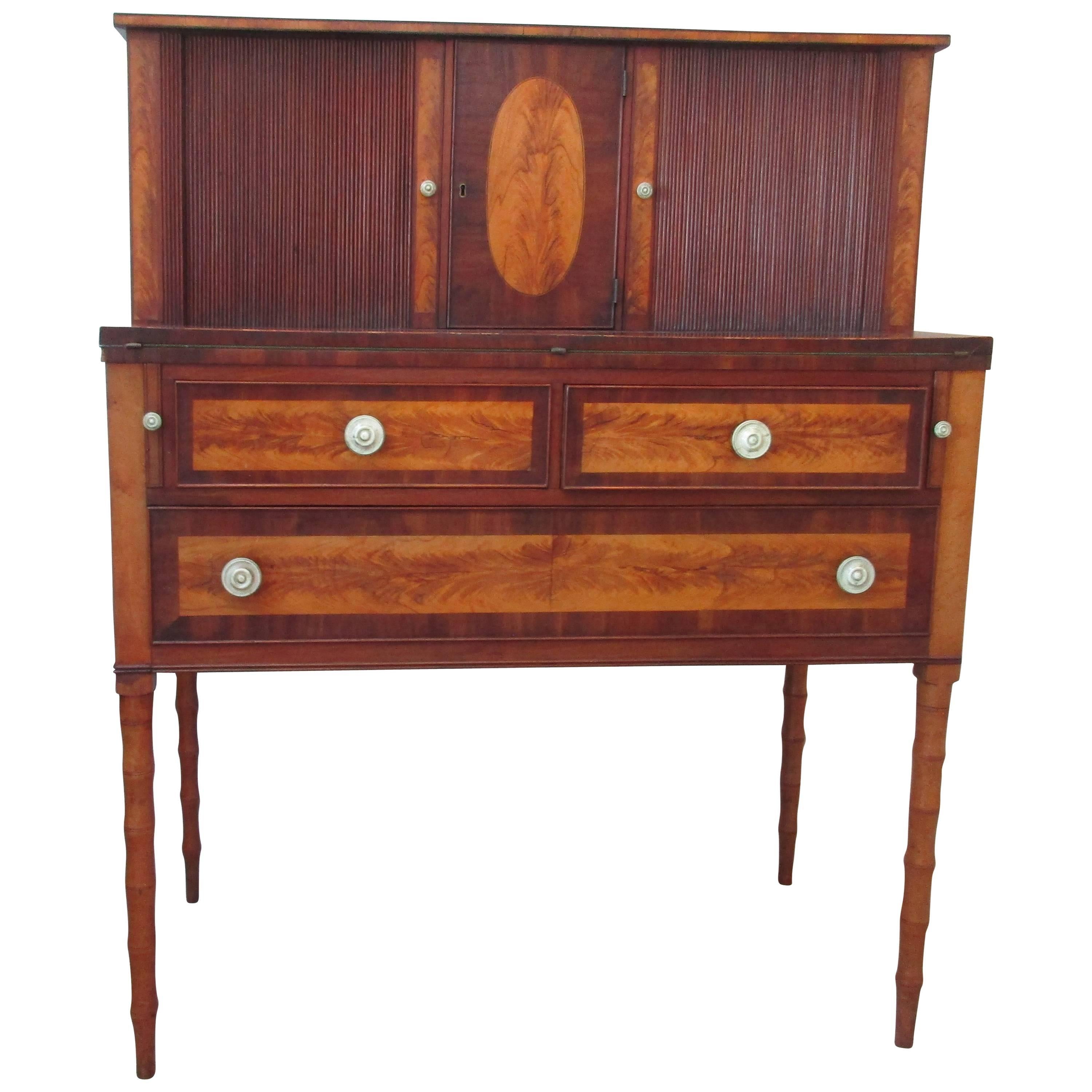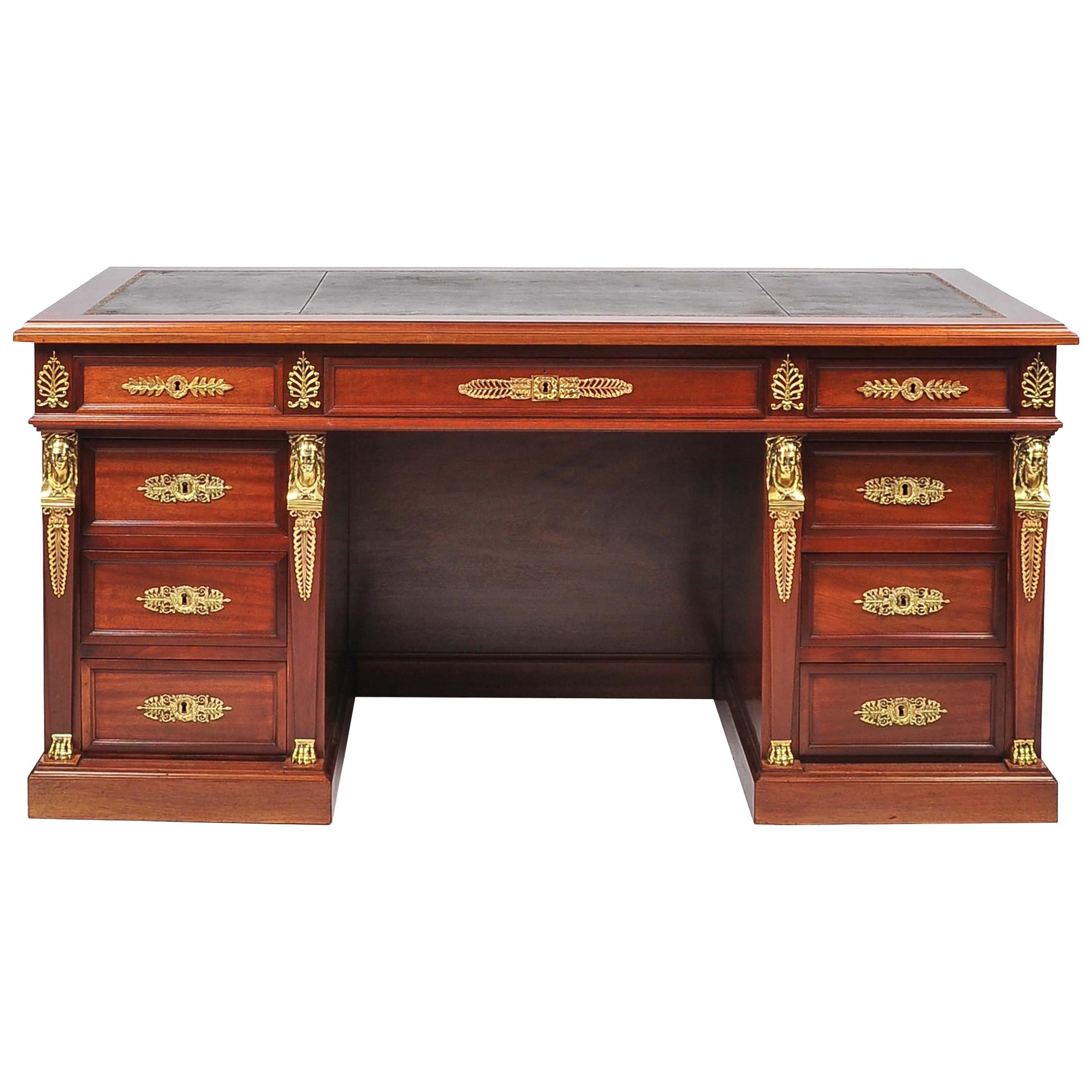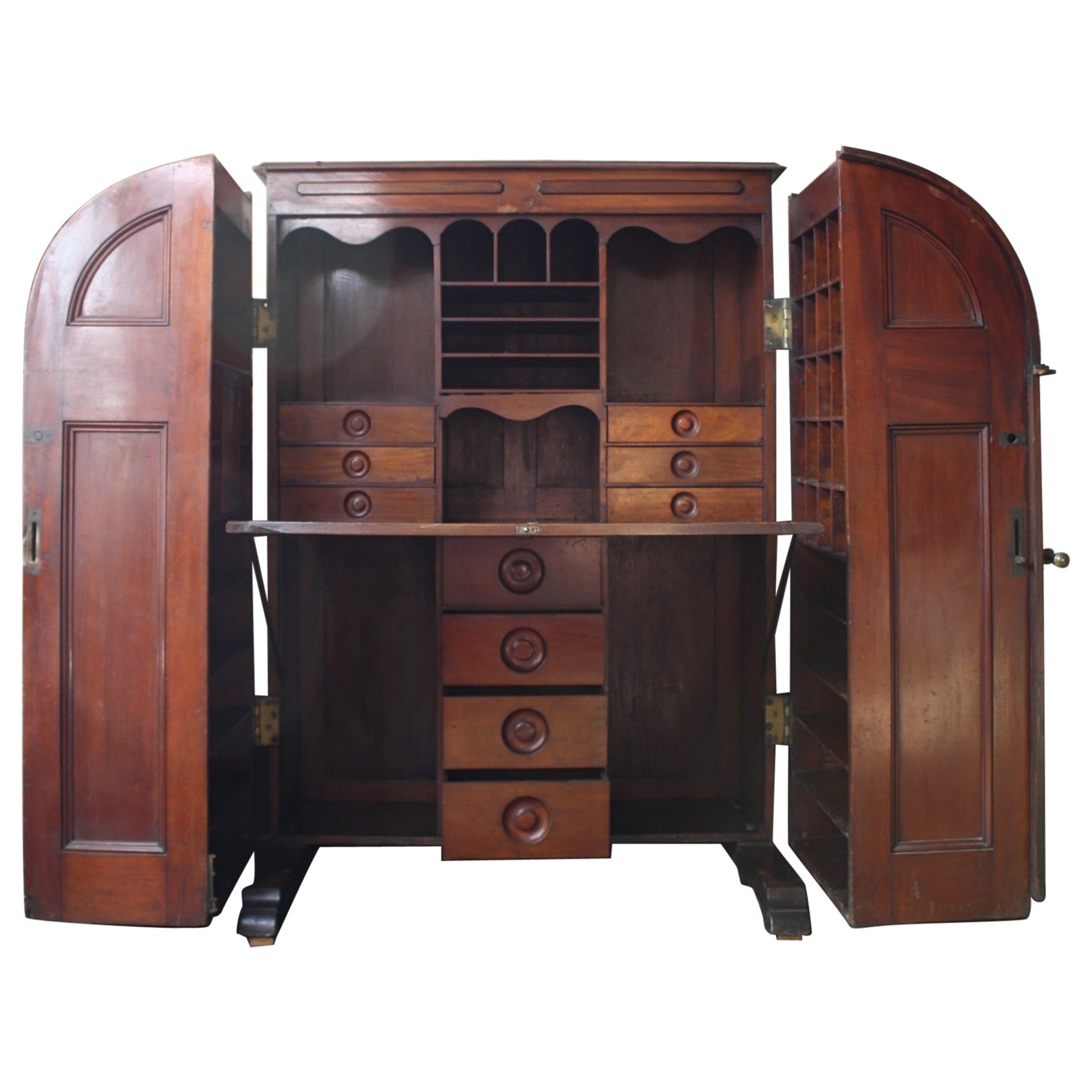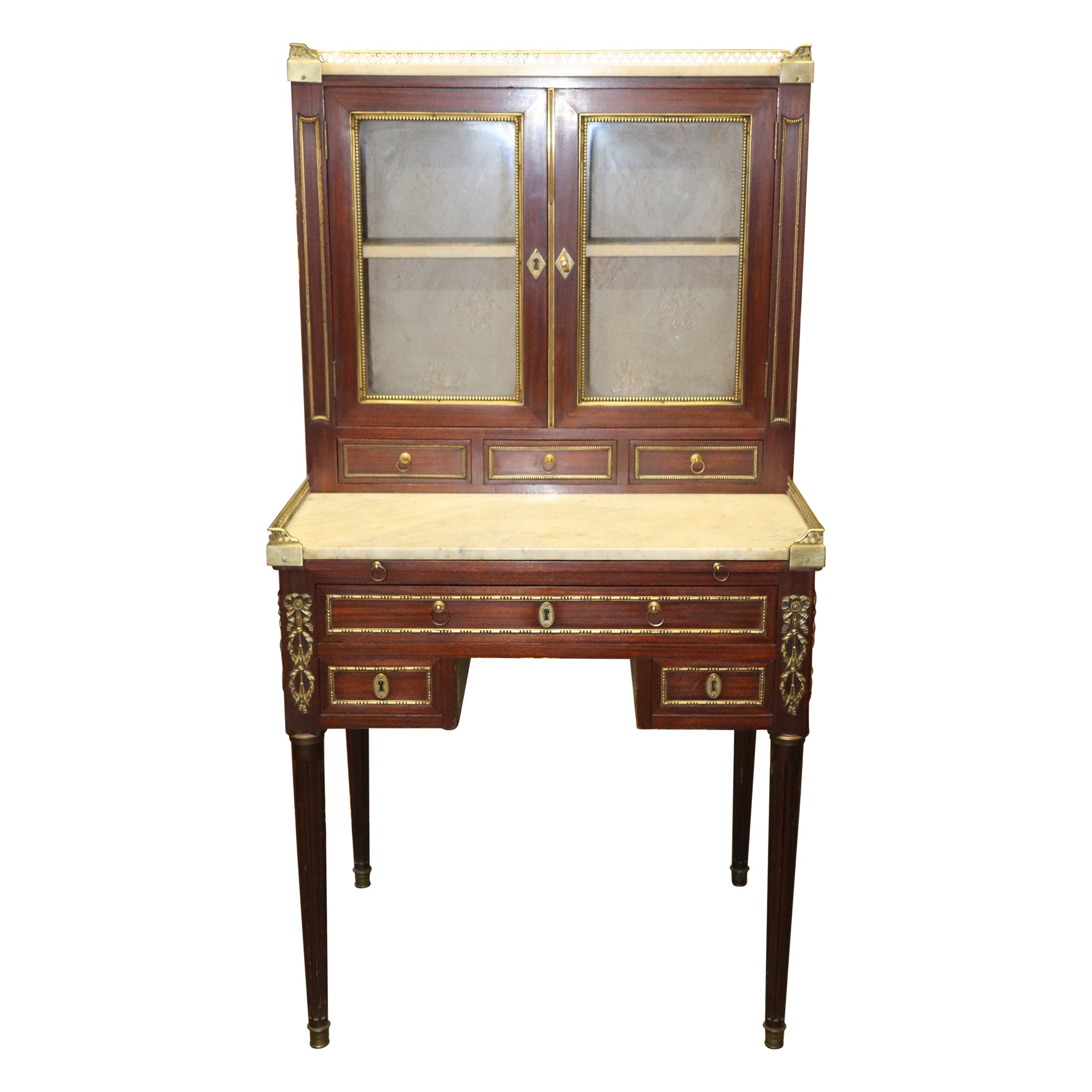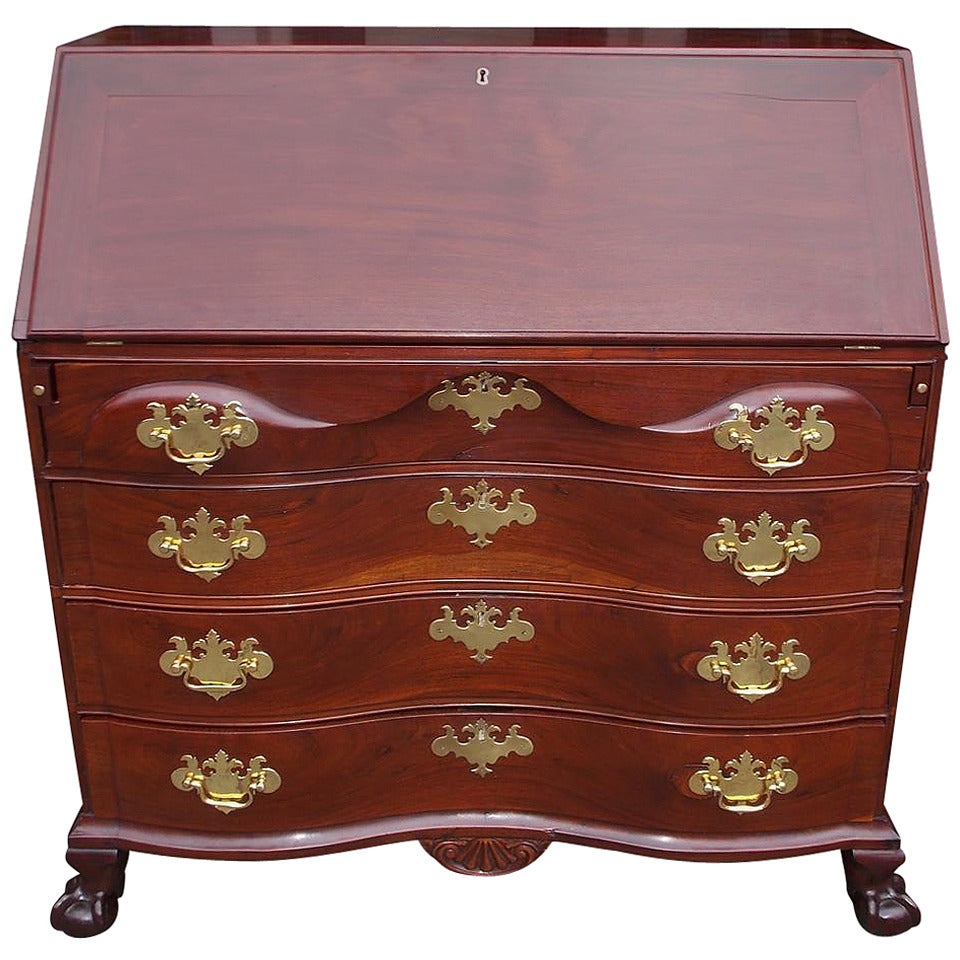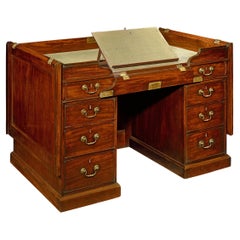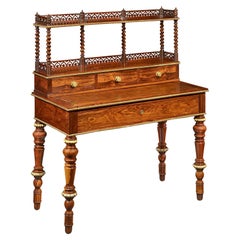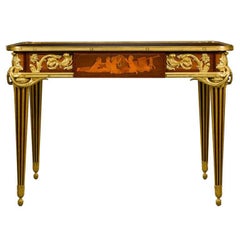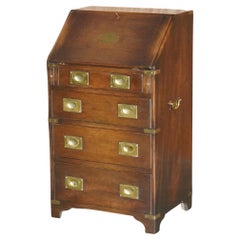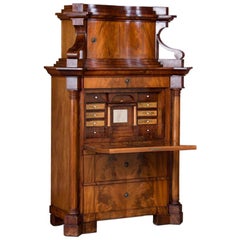
Mahogany British Campaign Desk
View Similar Items
Want more images or videos?
Request additional images or videos from the seller
1 of 9
Mahogany British Campaign Desk
About the Item
- Dimensions:Height: 48 in (121.92 cm)Width: 33 in (83.82 cm)Depth: 19.5 in (49.53 cm)
- Style:Campaign (In the Style Of)
- Materials and Techniques:
- Place of Origin:
- Period:
- Date of Manufacture:circa 1900
- Condition:
- Seller Location:New Orleans, LA
- Reference Number:Seller: 30-33371stDibs: LU891111091503
About the Seller
5.0
Recognized Seller
These prestigious sellers are industry leaders and represent the highest echelon for item quality and design.
Established in 1912
1stDibs seller since 2010
92 sales on 1stDibs
Typical response time: 6 hours
More From This SellerView All
- Mahogany Desk by Thomas ChippendaleBy Thomas ChippendaleLocated in New Orleans, LAThis writing desk from the highly esteemed Thomas Chippendale is exceptionally rare and unique. The renowned cabinetmaker was the first craftsman to exhibit such a strong following that an entire style bears his name and not that of a monarch. He was famous for using the highest quality timbers, the finest quality mounts and for striving for perfection in every piece of furniture he created. Chippendale's clients included Catherine II of Russia, famed actor David Garrick...Category
Antique 18th Century English Chippendale Desks
MaterialsBrass
- British Campaign Writing TableLocated in New Orleans, LAThis rare early 19th century rosewood campaign desk displays exquisite beauty and remarkable design functionality characteristic of British military furniture. Adorned with gilt bron...Category
Antique Early 19th Century English Campaign Desks and Writing Tables
MaterialsBronze
- Mechanical Desk by Alfred Emmanuel Louis BeurdeleyBy Alfred Emmanuel Louis BeurdeleyLocated in New Orleans, LAThis superb mechanical desk by famed French ebeniste Alfred Emmanuel Louis Beurdeley is both an artistic and engineering achievement. A Parisian ca...Category
Antique 19th Century French Desks
MaterialsOther
- Louis XV Style Writing Desk by François LinkeBy François LinkeLocated in New Orleans, LASuperior craftsmanship and elegant bronze work characterize this tambour front roll top writing desk by François Linke, the most important French ébéniste of his time. Linke is celeb...Category
Antique Late 19th Century French Louis XV Desks
MaterialsBronze
- King George I Ambassadorial Secrétaire-CabinetLocated in New Orleans, LAThis highly important secrétaire-cabinet was crafted for and specially ordered by King George I for the British Ambassador to Russia. From its craftsmanship and materials to its exceptional artistry, it is a work of royal and historic significance that exudes power in each and every detail. The broken pediment at its apex features the simplified royal coat of arms bearing the king’s crown, while the interior is adorned by portraits of the British Royal Family. Placed within the ambassador’s St. Petersburg home, this entirely unique piece of furniture would have been a potent reminder of England's grandeur and political importance. Relations between England and Russia during this period were at an all-time high. Peter the Great had traveled to England in 1698 as part of his widely known “Grand Embassy” tour, wherein he attempted to gain foreign support against the Ottoman Empire. He spent a period of nearly four months there, meeting with King William III and his court on numerous occasions. Noted academic Arthur MacGregor wrote concerning the impact of the trip, “For two decades following Peter's visit, British influence in Russia reached a peak. It manifested itself in social custom, in craft practice and in ships and naval organization... it reached a significant sector of the population before relations cooled once again and the two nations pulled back from this era of unprecedented cordiality.” First and foremost, however, it is a reminder of British might and influence. By the reign of King George I, England had come into its own as a world power. Unique in its design, this cabinet is a reflection of the country’s might. It is crafted from the highest-quality solid walnut and burr walnut adorned by gilded lock plates and engraved hinges. The presence of ormolu at its apex and lining the doors was a rarity for this period, and its addition makes manifest the importance of the design. The outer doors open to reveal multiple interiors, including fifteen separate drawers around a central cupboard; the cupboard doors each bear mezzotint portraits of George I and his father, Ernest Augustus, Elector of Hanover. An etching after the portrait of George I dating to circa 1716 is in London’s Royal Academy. A second, inner pair of doors are adorned by mezzotints of the Prince and Princess of Wales (later Queen Caroline and George II), which are both after portraits by Sir Godfrey Kneller dated 1716 in the Royal Collection. A final portrait is revealed on the very interior of the cabinet, where a mezzotint of Frederick, Anne, Amelia and Caroline, children of the Prince of Wales, resides. An etching (circa 1715-1720) after this portrait can be found in the National Portrait Gallery (London). Apart from its abundance of royal portraiture, the cabinet features stunning painted decoration, including floral designs as well as clouds, birds and trees in a bucolic motif reminiscent of Eden. Its lower portion is a study in both form and function, featuring a fitted secrétaire-drawer above three additional drawers for storage. The cabinet appears in The Shorter Dictionary of English Furniture by R. Edwards from 1964, a text that is regarded as the bible of British furniture design. Edwards describes it as a “writing cabinet...given by George I to the British Ambassador at the Russian court.” The cabinet was likely made for the 18th-century German diplomat and writer Friedrich Christian Weber, who represented English interests at the Russian court from 1714 until 1719. Although Weber’s tenure as ambassador was relatively short, while in St. Petersburg, he authored his account entitled Das veraenderte Russland (The Present State of Russia), which was published in three volumes in 1721, 1739 and 1740. It may, however, also have been made for George Douglas, 2nd Earl of Dumbarton, who served as ambassador alongside Weber in 1716. Diplomatic relations ceased between the two countries in 1721. In 1928, the cabinet appeared for sale at the International Exhibition of Antiques & Works of Art in Olympia. It had previously been in the collection of the Woltner family of Bordeaux, the celebrated vintners who owned the estate Château Laville Haut-Brion and produced wine of the same name. According to the family, Monsieur Woltner was given the cabinet as a gift from an aunt who lived in Russia for many years. After leaving the Woltner collection, the cabinet was acquired by William Berry...Category
Antique 18th Century English Georgian Secretaires
MaterialsBrass
- 19th Century French Secrétaire by DurandBy Gervais DurandLocated in New Orleans, LASuperior craftsmanship and intricate marquetry characterize this rare secrétaire by Gervais-Maximilien-Eugène Durand, one of the most popular French ébénistes of the 19th century. Th...Category
Antique 19th Century French Louis XV Secretaires
MaterialsBronze, Ormolu
You May Also Like
- Antique Anglo Indian Military Campaign Camphor Wood & Brass Bureau Desk DrawersLocated in GBWe are delighted to offer for sale this lovely late Victorian Anglo Indian campaign Camphor wood with brass inlay Military bureau desk This piece really is exquisite. It’s a genui...Category
Antique Late 19th Century Indian Campaign Desks
MaterialsBrass
- Lovely Small Harrods London Reh Kennedy Military Campaign Writing Bureau DeskBy Harrods, Kennedy Furniture For Harrods LondonLocated in GBWe are delighted to offer this lovely small R.E.H Kennedy made, Harrods London retailed military campaign bureau desk in mahogany with brass fittings ...Category
20th Century English Campaign Secretaires
MaterialsBrass
- Antique German Mahogany Biedermeier Secretary DeskLocated in Round Top, TXOutstanding early 19th century German Biedermeier secretary desk, circa 1830, with exceptional book matched mahogany drawer and desk front. ...Category
Antique Early 19th Century German Biedermeier Secretaires
MaterialsWood
- John Stuart Vintage White Lacquered Campaign Wood Desk with X-Chrome BaseBy John Stuart, West Michigan Furniture Co.Located in North Miami, FLThis newly restored vintage John Stuart campaign 2 drawer desk and or writing desk is white lacquered over wood with chrome handles and 2 X-frame ...Category
Vintage 1970s American Modern Desks
MaterialsChrome
- English Mahogany Secretary Desk, 19th CenturyLocated in Southampton, NYEnglish Mahogany secretary desk, 19th century Three pieces: Crown, upper drawers and lower cabinet. Lowest draw pulls out as a secretary desk. Measures: 21" deep x 46.5" wide x 80....Category
Antique 19th Century British Secretaires
MaterialsMahogany
- Vintage Thomasville Georgian Flame Mahogany Blockfront Secretary DeskBy ThomasvilleLocated in Germantown, MDThis Georgian style traditional block front secretary desk is matched flame grain mahogany is signed Thomasville Original finish in fine c...Category
Late 20th Century Georgian Secretaires
MaterialsMahogany
$1,621 Sale Price35% Off
Recently Viewed
View AllMore Ways To Browse
Mahogany Campaign Desks
British Campaign Officer
Desk Provence
George 1 Desk
Vintage Travel Desk
English Campaign Desk
Military Campaign Desk
British Gentry
Desk 48 Wide
Vintage Field Desk
Vintage Mahogany Filing Cabinet
Vintage Mahogany File Cabinet
48 Bar Cabinet
Queen Mary 2
Used Poker Chips
Playing Cards Case
British India Silver
Queen Pen
